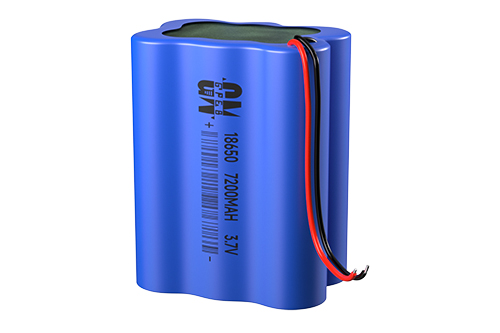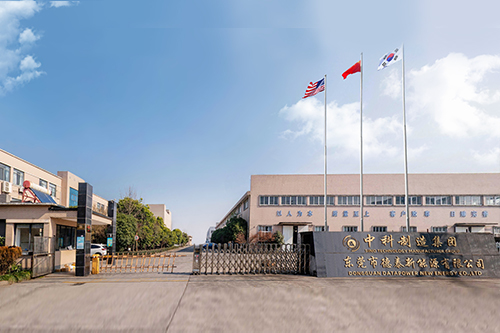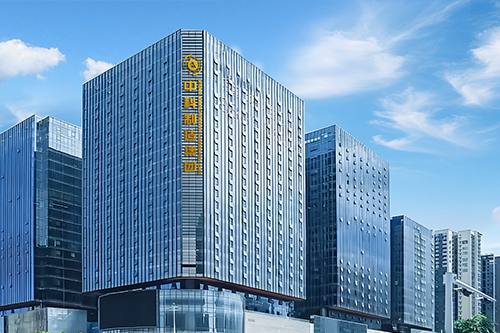Why does my country’s lithium-ion battery separator technology rely on
imports?
Why does my country’s lithium-ion battery separator technology rely on
imports? Although my country's lithium-ion battery market is booming, our
country is not a strong country in lithium-ion battery separators. We are still
far behind the world's first-class level. In particular, high-end battery
separator materials still rely on imports.
Among the four core materials of lithium batteries, the positive and
negative electrode materials and electrolyte have been domestically produced,
but the separator is still a shortcoming.
Why does my country’s lithium-ion battery separator technology rely on
imports?
my country's lithium-ion battery separators have made major breakthroughs
in dry process and now have world-class manufacturing levels. However, in the
field of wet separators, domestic separator companies are limited by many
factors such as process and technology. The product level is still low, and
production equipment mainly relies on imports.
There is a big gap between my country's lithium battery separator products
and foreign products in terms of thickness, strength, and porosity consistency,
and product batch consistency also needs to be improved.
As the core material of soft-pack batteries, the production technology of
aluminum-plastic film is much more difficult than that of separators, positive
electrodes, negative electrodes, and electrolytes. It is one of the three high
technologies in the lithium battery industry. From the perspective of product
performance, there is a big gap between my country's aluminum-plastic film
products and foreign products, which are mainly reflected in:
The surface treatment process of aluminum foil is backward and pollutes a
lot; the water treatment of aluminum foil will produce "hydrogen embrittlement",
resulting in poor disassembly resistance of the aluminum-plastic film; the
surface stiffness of the aluminum foil is not enough and the yield rate is poor;
it is easy to combine polypropylene with the highly thermally conductive
aluminum foil surface. Curling, resulting in lamellar crystals; domestic
adhesive formulation technology is poor and prone to delamination and peeling
problems.
From an industry perspective, the United States has relatively strong
R&D and design capabilities and is still leading the original innovation and
core material research and development of lithium batteries; Japan, as a major
battery material manufacturing country, has strict production specifications and
can be the first to manufacture new finished batteries.
At present, the best lithium battery separator materials in the world come
from two Japanese companies, Asahi Kasei and Toen Chemical, and 90% of the
domestic lithium battery aluminum plastic film market is also monopolized by
Japanese manufacturers such as Showa Denko.
Compared with Japan and South Korea, my country's low-end lithium battery
products have more advantages, mainly because labor and raw materials are
relatively cheap. However, in some high-end products, especially the core
materials and manufacturing processes related to the safety of lithium
batteries, there are still A larger gap. The lack of core patents and the
inadequacy of key materials such as separators have not only become an
unbearable pain for domestic lithium batteries, but also hindered the "going
out" of domestic lithium battery companies.
Separators for lithium batteries have strict requirements on safety,
permeability, porosity and thickness. Compared with Japan, the gap between my
country's high-end diaphragms is obvious. The consistency of domestic separator
products is not high, and there are problems such as substandard porosity,
uneven thickness, pore distribution, and pore size distribution.
Domestic lithium batteries are stuck: high-end separators still rely
heavily on imports. If the development of lithium batteries is to be independent
of others, high-end materials such as separators cannot be avoided!
Why does 18650 lithium-ion battery separator technology rely on
imports?
Why does my country’s 18650 lithium-ion battery separator technology rely
on imports? Although my country's 18650 lithium-ion battery market is booming,
our country is not a strong country in 18650 lithium-ion battery separators. We
are still far behind the world's first-class level. In particular, high-end
battery separator materials still rely on imports.
Among the four core materials of lithium batteries, the positive and
negative electrode materials and electrolyte have been domestically produced,
but the separator is still a shortcoming.
Why does my country’s 18650 lithium-ion battery separator technology rely
on imports?
my country's 18650 lithium-ion battery separators have made major
breakthroughs in dry process and now have world-class manufacturing levels.
However, in the field of wet separators, domestic separator companies are
limited by many factors such as process and technology. The product level is
still low, and production equipment mainly relies on imports.
There is a big gap between my country's lithium battery separator products
and foreign products in terms of thickness, strength, and porosity consistency,
and product batch consistency also needs to be improved.
As the core material of soft-pack batteries, the production technology of
aluminum-plastic film is much more difficult than that of separators, positive
electrodes, negative electrodes, and electrolytes. It is one of the three high
technologies in the lithium battery industry. From the perspective of product
performance, there is a big gap between my country's aluminum-plastic film
products and foreign products, which are mainly reflected in:
The surface treatment process of aluminum foil is backward and pollutes a
lot; the water treatment of aluminum foil will produce "hydrogen embrittlement",
resulting in poor disassembly resistance of the aluminum-plastic film; the
surface stiffness of the aluminum foil is not enough and the yield rate is poor;
it is easy to combine polypropylene with the highly thermally conductive
aluminum foil surface. Curling, resulting in lamellar crystals; domestic
adhesive formulation technology is poor and prone to delamination and peeling
problems.
From an industry perspective, the United States has relatively strong
R&D and design capabilities and is still leading the original innovation and
core material research and development of lithium batteries; Japan, as a major
battery material manufacturing country, has strict production specifications and
can be the first to manufacture new finished batteries.
At present, the best lithium battery separator materials in the world come
from two Japanese companies, Asahi Kasei and Toen Chemical, and 90% of the
domestic lithium battery aluminum plastic film market is also monopolized by
Japanese manufacturers such as Showa Denko.
Compared with Japan and South Korea, my country's low-end lithium battery
products have more advantages, mainly because labor and raw materials are
relatively cheap. However, in some high-end products, especially the core
materials and manufacturing processes related to the safety of lithium
batteries, there are still A larger gap. The lack of core patents and the
inadequacy of key materials such as separators have not only become an
unbearable pain for domestic lithium batteries, but also hindered the "going
out" of domestic lithium battery companies.
Separators for lithium batteries have strict requirements on safety,
permeability, porosity and thickness. Compared with Japan, the gap between my
country's high-end diaphragms is obvious. The consistency of domestic separator
products is not high, and there are problems such as substandard porosity,
uneven thickness, pore distribution, and pore size distribution.
Domestic lithium batteries are stuck: high-end separators still rely
heavily on imports. If the development of lithium batteries is to be independent
of others, high-end materials such as separators cannot be avoided!
Read recommendations:
Ni-MH AA800mAh 1.2V
lithium ion battery 18650 price.18650 lithium battery winding process precautions
Lithium battery protection measures
18650 battery pack 3.7v
li ion 18650 battery pack Factory











































 360° FACTORY VR TOUR
360° FACTORY VR TOUR
 Whatsapp
Whatsapp
 Tel
Tel Email
Email TOP
TOP